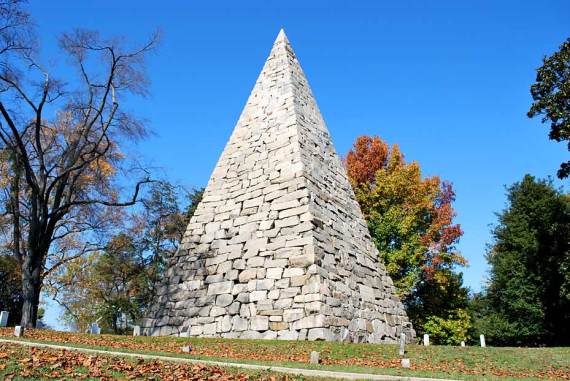 WHAT: Monument to Confederate War Dead.
WHAT: Monument to Confederate War Dead.
LOCATION: Hollywood Cemetery in Richmond’s Oregon Hill neighborhood.
ARTIST: Design originated from engineer Charles Henry Dimmock.
DEDICATION: November 8, 1869. (Cornerstone was laid Dec. 3, 1868)
DESCRIPTION: The famed 90-foot pyramid is made with large blocks of James River granite. The blocks were stacked without bonding. Built overlooking the cemetery’s Soldiers’ Section. It is a monument to the 18,000 Confederate enlisted men buried in the cemetery.
* * *
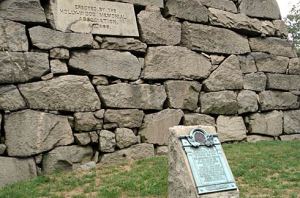 The pyramid took a year to build and there were many accidents during construction. Thomas Stanley, a Lynchburg convict working with the construction crew, made the perilous climb to the top to lower the capstone into place.
The pyramid took a year to build and there were many accidents during construction. Thomas Stanley, a Lynchburg convict working with the construction crew, made the perilous climb to the top to lower the capstone into place.
The plaque reads: “A memorial to the Confederate women of Virginia, 1861-1865. The legislature of Virginia of 1914, has at the solicitation of Ladies Hollywood Memorial Association and United Daughters of Confederacy of Virginia placed in perpetual care this section where lie buried eighteen thousand confederate soldiers.
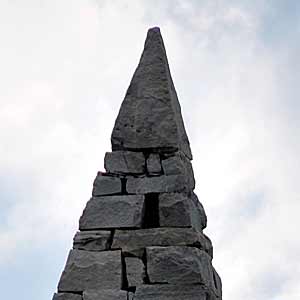 A chapter (Oct. 1996) in Harry Kollatz Jr.’s book, True Richmond Stories, retold the tale of the capstone’s placement, and how prisoner Thomas Stanley — assumed to have come from the nearby state penitentiary on Gamble’s Hill — volunteered to perform the dangerous honor:
A chapter (Oct. 1996) in Harry Kollatz Jr.’s book, True Richmond Stories, retold the tale of the capstone’s placement, and how prisoner Thomas Stanley — assumed to have come from the nearby state penitentiary on Gamble’s Hill — volunteered to perform the dangerous honor:
And thus it was that a horse thief came to be on the work gang for Dimmock’s pyramid. The knots in the hoisting ropes were tied too close to the top and the stone wouldn’t go past them. Stanley poured water on the ropes, causing them to shrink the needed inches. Then, as a breathless crowd watched, the prisoner put himself between the mass of hanging rock and the pyramid and righted the stone to its seat.
Everyone that has heard of this legend assumes that Stanley went free after this accomplishment. Kollatz’s story cleared that up, somewhat:
In the release box of his prison schedule, the simple penciled notation reads “transferred.” There is no mention of when or where. A romantic notion suggests itself: the warden opened a gate and told Stanley to go and never come back…
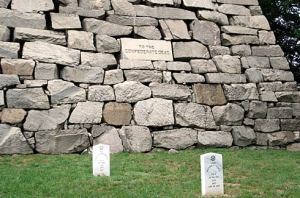 Seeing this monument is an essential to anyone that visits Richmond. The first time I saw the pyramid, I was shocked by its size and towering presence in the scenic cemetery. It can be seen from many points near Oregon Hill. It is easy to imagine the stones being brought in from either the Kanawha Canal — located just below Hollywood — or Belle Isle — just a bit further below the canal and across the James River.
Seeing this monument is an essential to anyone that visits Richmond. The first time I saw the pyramid, I was shocked by its size and towering presence in the scenic cemetery. It can be seen from many points near Oregon Hill. It is easy to imagine the stones being brought in from either the Kanawha Canal — located just below Hollywood — or Belle Isle — just a bit further below the canal and across the James River.
 WHAT: The War Horse at the Virginia Historical Society on The Boulevard, Richmond, Va.
WHAT: The War Horse at the Virginia Historical Society on The Boulevard, Richmond, Va.






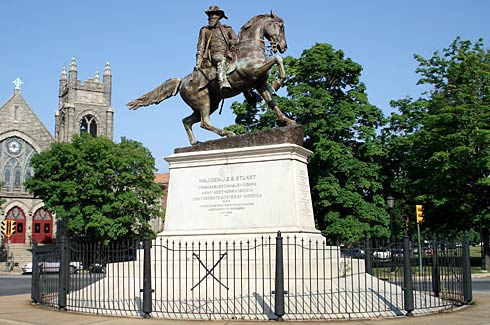

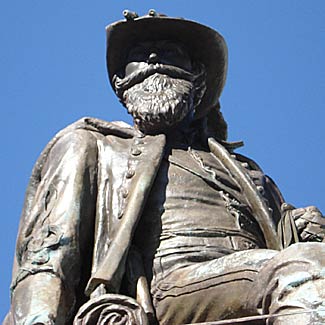



Comments & trackbacks